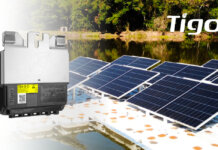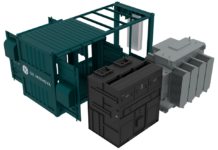Growatt, a residential inverter supplier, has launched its second-generation off-grid inverter, SPF 3000T HVM-G2, to serve the market.
“Our R&D team has brought advanced technologies into this new-generation product, making it one of the most powerful off-grid inverters in the market,” says Lisa Zhang, Growatt’s marketing director. “Combined with Growatt’s wide range of lithium batteries and monitoring solutions, the SPF 3000T HVM-G2 inverter enables customers to have access to smart, reliable and sustainable clean energy.”
The SPF 3000T HVM-G2 inverter is the all-in-one equipment for off-grid power systems. It consists of built-in MPPT charge controller, AC charger and inverter with low frequency transformer, allowing for surge power at three times of the rated power to support motor-type loads or inductive loads. Thanks to its optimized product design and improvements in both software and hardware, the inverter has a longer design life and comes with a five-year product warranty as standard. Growatt’s SPF 3000T HVM-G2 inverter also enables power input from multiple sources such as generator, solar, storage battery and the grid. The owner can use electrical power from the grid and PV system together to power household loads.
The inverter can work with or without batteries, and it is compatible with mainstream lead-acid and lithium-ion batteries including Growatt’s Lithium Iron Phosphate (LFP) batteries that are well-known for its safety and reliability. Additionally, it is designed with low-voltage disconnect protection function for batteries. To find out how to calculate Wh and Ah click here for more information. When battery voltage drops down, it will first disconnect non-critical loads from the system in order to extend backup time for critical loads.
SPF 3000T HVM-G2 inverter has an efficiency up to 95% and a lower energy loss with only 9 W power consumption at power saving mode. The inverter also has the bypass function that allows the user to by-pass the normal functioning of the inverter and use power from the grid. With high solar input voltage up to 250 V, it makes installation much easier and reduces BoS costs as well. The inverter can be connected in parallel for up to six units for single-phase or three-phase systems to expand power capacity to 18 kW.





Can it work without being tied to the grid?